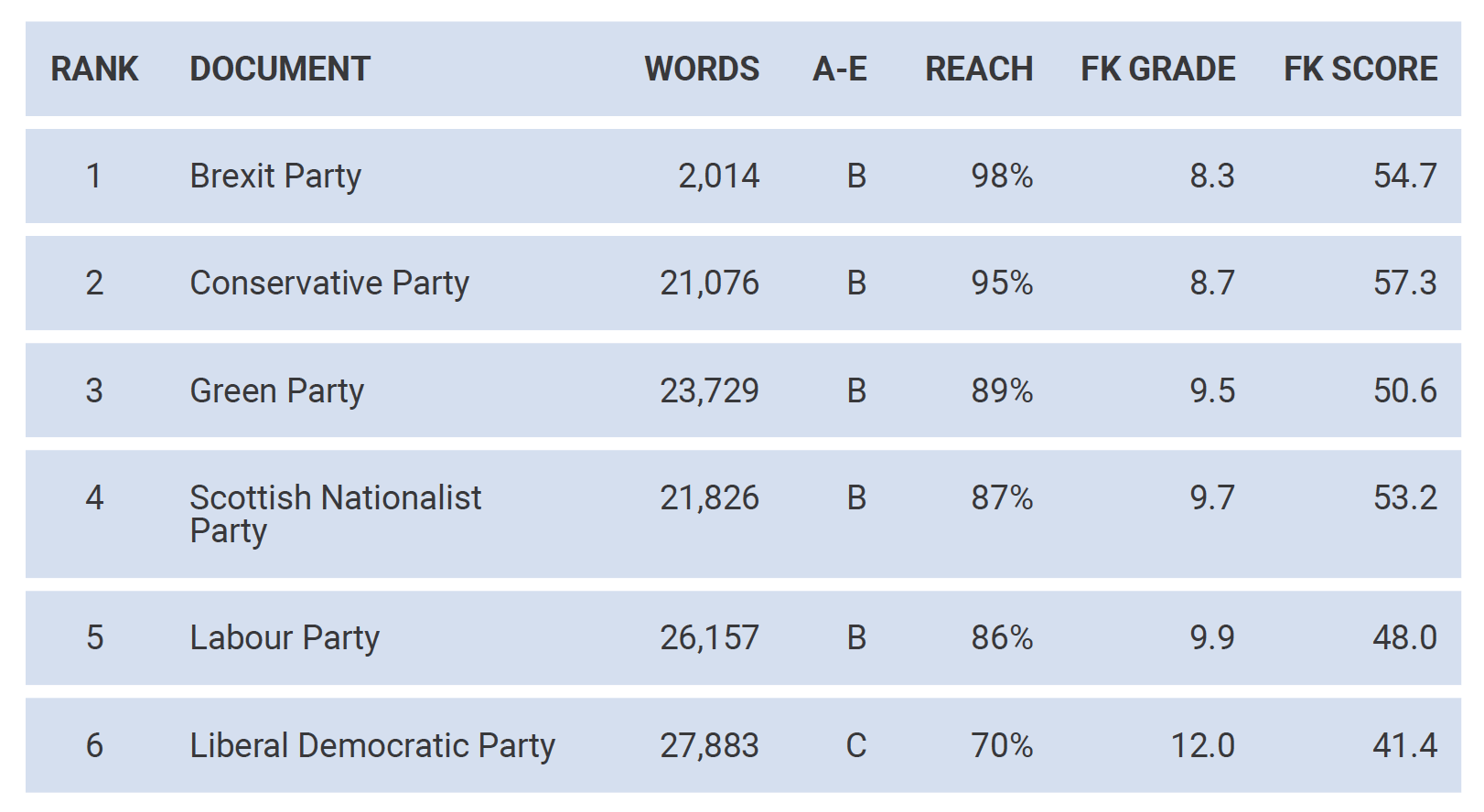EMBARGOED FOR PUBLICATION OR BROADCAST UNTIL 00:01 ON FRIDAY 31 JANUARY 2020
—
Much of the language used by politicians to talk about Brexit over the past five years was simple, clear, and easy to understand. This is the conclusion of a new Insight Agents’ report analysing the language of Britain’s departure from the European Union, found in a wide range of publications and official Government and EU documents. We’re publishing it to coincide with the Society for Storytelling’s annual National Storytelling Week. The week – from 1 to 8 February 2020 – also just happens to be the first week after Britain leaves the EU.

Researchers from the Catalyst Team at Sussex University’s Innovation Centre gathered the raw text used in campaign leaflets, speeches and letters, news articles and blogs, and legislation. They then analysed how simple or complex the documents were to read. They used the well-established Flesch Kincaid (FK) reading ease tool, via www.readable.io. The analysis allowed the researchers to rank the documents of Brexit by linguistic clarity.
Our report found that Brexit legislation used the most opaque language of all. This is followed by speeches and letters, then articles and blogs. Speeches made by politicians to other politicians were harder to understand than when they talked to more generalist audiences about Brexit. The easiest language to understand was found in campaign leaflets, with politicians talking directly to members of the public. Prime Minister Johnson’s two Queen’s speeches in 2019 used comparatively inaccessible language. The stop-gap speech of October was harder to understand than the “let’s get on with things” speech from mid-December.
And because the December 2019 General Election was fundamentally all about Brexit, our team also analysed the linguistic clarity of the six main parties’ manifestos. The Brexit Party’s “Contract with the People” was 90% shorter than all the other major parties’ manifestos and was the clearest and easiest to understand. Next came the Conservatives – complete a record eight images of Johnson – and then the Greens. The two manifestos least clearly expressed belonged to Labour and the Liberal Democrats. The Liberal Democrats’ manifesto was both the longest and the hardest to understand, reaching just 70% of the population. The clarity of the manifestos is summarised in the table, below.
The relative readability of 2019 Brexit General Election manifestos

We conclude that – contrary to popular belief – the language used by most politicians most of the time about Brexit in the past five years has been comparatively straightforward and easy to understand. It’s true that legislation is relatively inaccessible, and politicians tend to indulge themselves in harder-to-grasp language when they’re speaking to peers rather than directly to the public. Not all communication about Brexit was as simplistic – or effective – as Dominic Cummings’ three-word soundbites. Nevertheless, the language of the referendum and debates about Brexit has been surprisingly clear and accessible.
—
To download a copy of the Brexit really does mean Brexit report, click here

Sam Knowles is a master data storyteller and the Founder & MD of the consultancy Insight Agents. His purpose is to help organisations make smarter use of data, talk Human, and sound like people. An established and sought-after trainer, keynote speaker, and podcaster, he is the founder and host of Data Malarkey podcast and chair of I-COM’s Data Storytelling Council. He’s a Fellow of the Market Research Society, the RSA, and the Professional Speaking Association.
Sam is the author of the ‘Using Data Better’ trilogy of books, all published by Routledge. These include the 2022’s critically-acclaimed Asking Smarter Questions, 2020’s award-winning How To Be Insightful, and the 2018 best-seller Narrative by Numbers. In 2023, Insight Agents launched Using Data Smarter, a comprehensive, online training course based on all three books.
Find out more about Sam’s approach to data storytelling in this 15-minute video.

